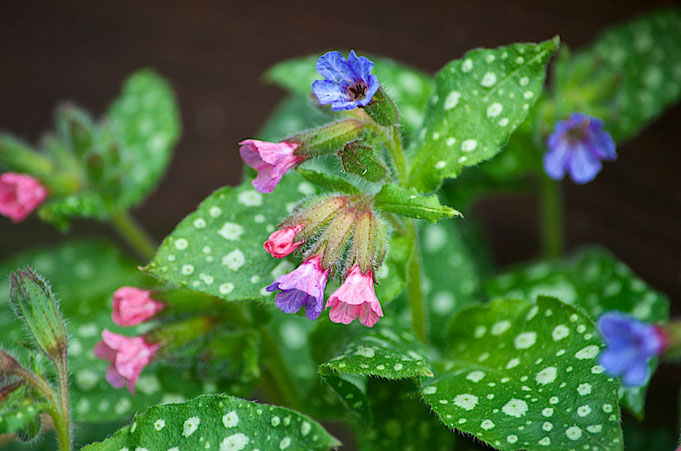Lungwort ... A Cure For What Ails You
The photo is of Pulmonaria saccharata 'Mrs. Moon', also called Lungwort or Bethlehem Sage. It is one of the earliest blooming perennials at Distant Hill Gardens. In spring, the plant produces small clusters of 5-petaled flowers that are pink at first, and later turn to blue-purple. It easily self-seeds, but the seedlings are manageable. It makes a beautiful ground cover or single plant early in the season, but can turn quite ugly in the heat of summer if it doesn't get enough water and shade.
The genus Pulmonaria or Lungworts have been cultivated for centuries as a medicinal herb, because the ovate spotted leaves were thought to be representative of diseased lungs. This followed the 'Doctrine of Signatures' - the concept that the key to the medicinal use of various plants was indicated by the form of the plant. This concept was employed by the herbalists of the Renaissance, and was accepted until the latter part of the 19th century.
Lungwort Tea is still used in the treatment of chest diseases and asthma. Its benefits are thought to include a therapeutic effect on the respiratory system, and it is said to be one of the best herbal remedies to relieve the most common symptoms of flu and colds.
Some -Wort Plants and Their ‘Signatures'
- Lousewort, Pedicularis - thought to be useful in repelling lice
- Spleenwort, Asplenium - thought to be useful in treating the spleen
- Liverwort, Marchantiophyta - thought to be useful in treating the liver
- Toothwort, Dentaria - thought to be useful in treating tooth ailments
- Hedge woundwort, Stachys - thought to have antiseptic qualities
- Lungwort - Pulmonaria - used in treating pulmonary infections.


